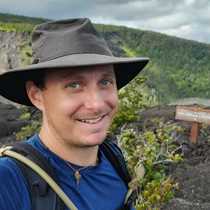Espanola is located in the southeast corner of the Galápagos and it is also the oldest, geologically-speaking. It is a stunning place for wildlife, both on land and in the water.
After breakfast, we grabbed our snorkeling gear and headed out for some deepwater snorkeling along the coast of a small islet with many different types of fish, sea lions, rays, and especially colorful invertebrates on the reef walls. Other guests snorkeled from the beach, which was also good for bodysurfing.
Afterward, we walked along a beautiful white sand beach, where many sea lions rested from swimming and diving for fish in the surrounding waters. Friendly mockingbirds and lava lizards also made the place interesting for photography. And that was just the morning!
After lunch, we headed to another place on the island called Punta Suarez, which is crowded with animals from beginning to end. Welcoming us were sea lions, crabs of all colors, marine iguanas, and more. At this time of year, male marine iguanas are especially colorful in order to attract females.
It is important to mention that this island has some species found nowhere else in the world, such as the Espanola mockingbird and the lava lizard (including the marine iguana subspecies). This island is also where the waved albatross nests from May to December.
As we continued along the trail heading inland, wildlife showed up everywhere. Mockingbirds, finches, and Galápagos doves are now very busy procuring food for themselves and their young. There were hundreds of Nazca boobies along the cliffs in the middle of their breeding season. Some had large chicks that were almost ready for flight and fishing.
A couple of blue-footed boobies with their amazing blue feet posed for pictures as we walked by. In the short distance on top of large rocks were two Galápagos hawks, the top predators of the Galápagos.
In addition to the wildlife and vegetation, a natural formation called the “blow hole” is another attraction. All of this combined to make this island a “jewel in the crown.”









